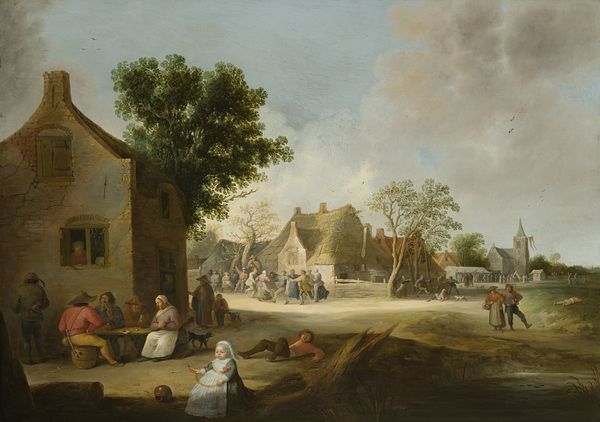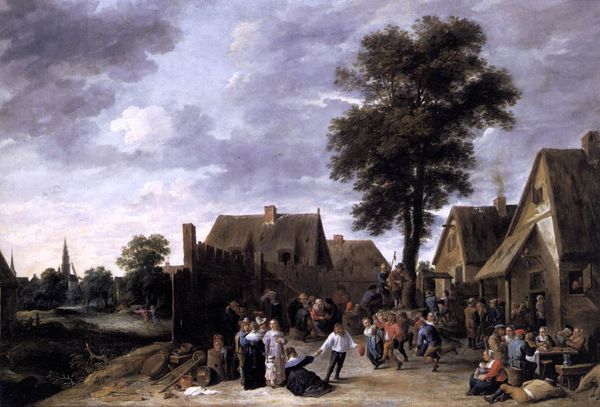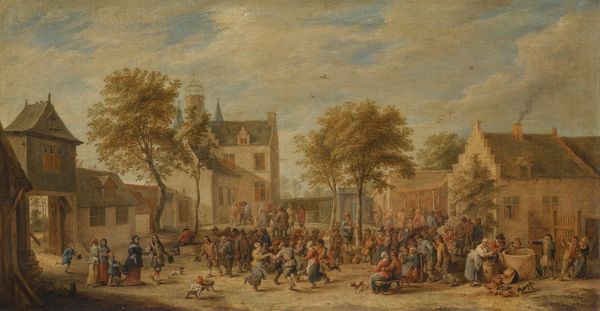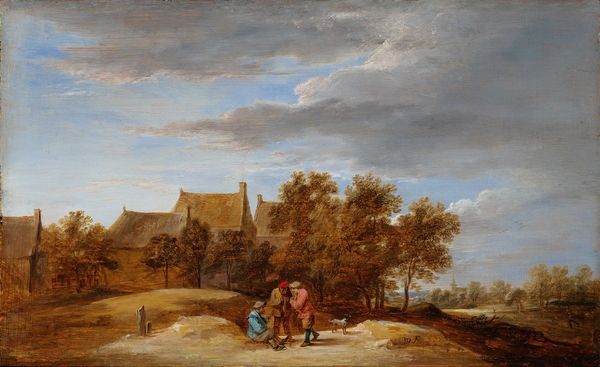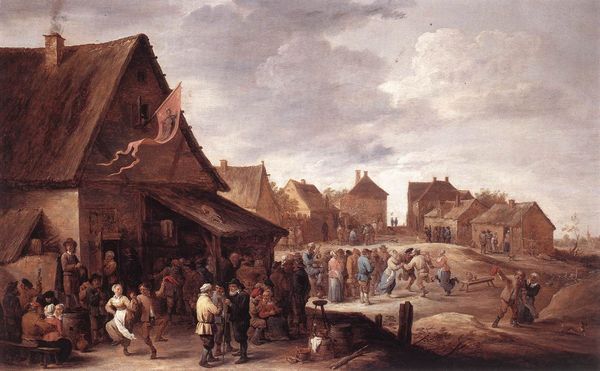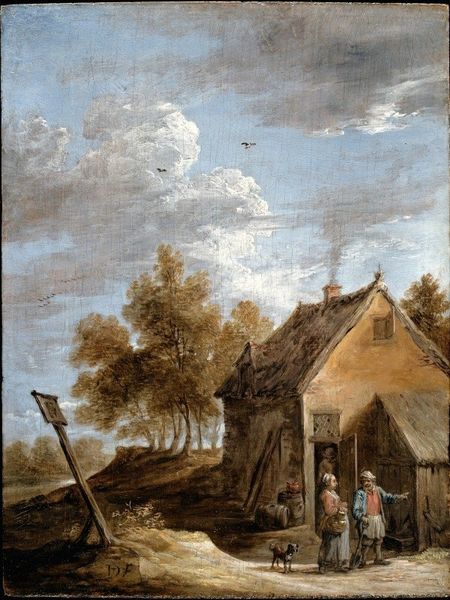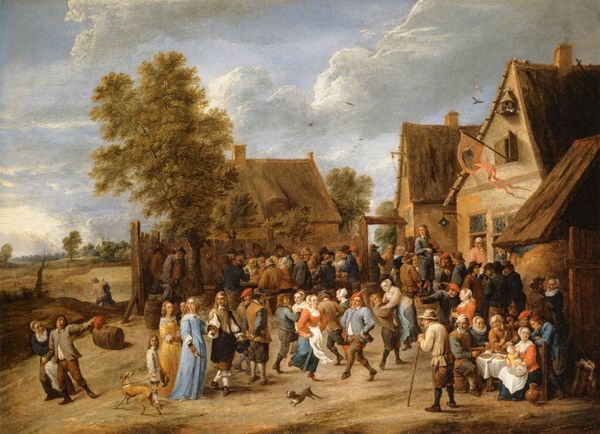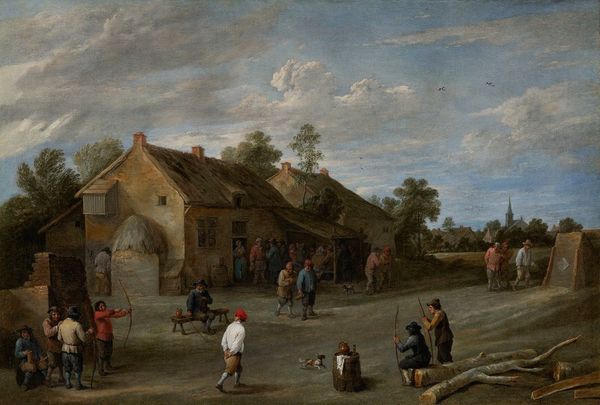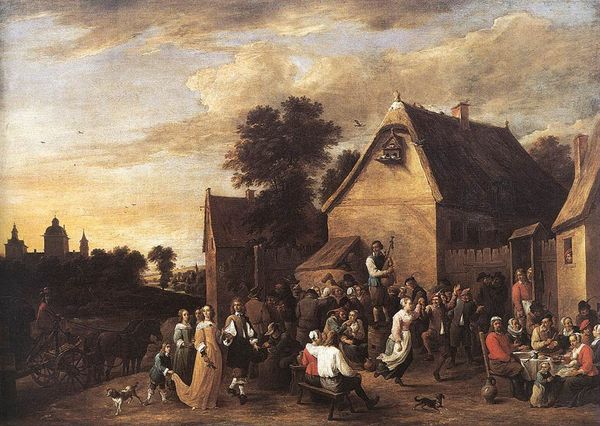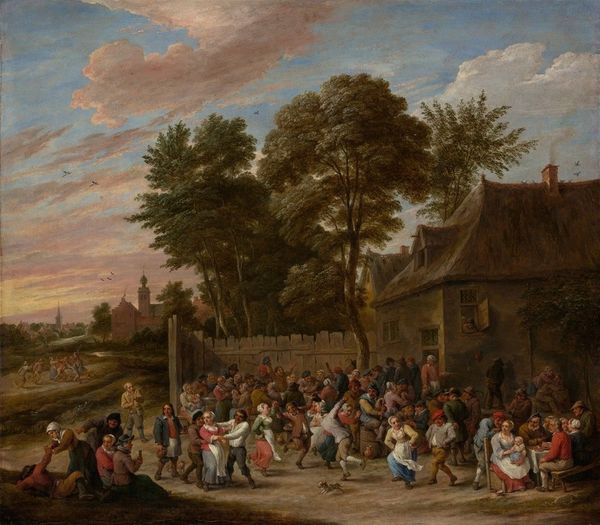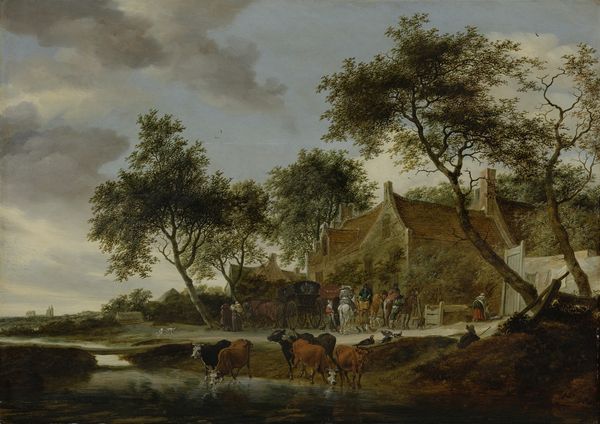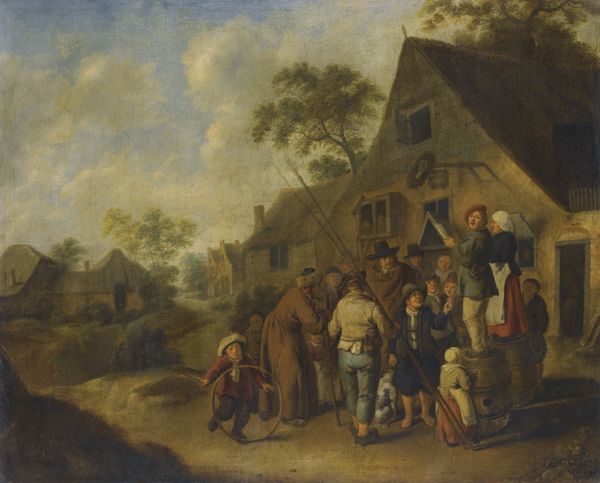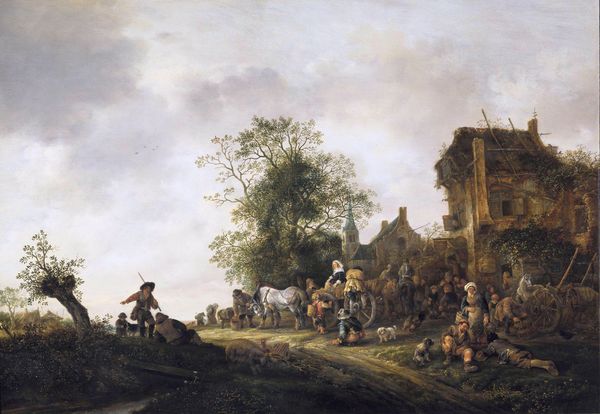
painting, oil-paint
#
narrative-art
#
baroque
#
painting
#
oil-paint
#
landscape
#
oil painting
#
cityscape
#
genre-painting
#
history-painting
#
realism
Copyright: Public Domain: Artvee
Curator: This oil on canvas is called "Soldiers Sacking A Village". It’s attributed to David Teniers the Younger, a Flemish Baroque painter. Editor: Immediately, there’s a sense of chaos. Despite the idyllic village setting, the figures convey a disturbing story of violence and vulnerability. The scale feels unsettling, like witnessing a miniature horror. Curator: Teniers lived through periods of intense social upheaval, including the Thirty Years' War, which deeply affected the Netherlands. Art historians see these genre paintings as reflections of societal anxieties during conflicts that involved looting, property destruction, and civilian casualties. Editor: Right. We should avoid seeing such scenes as simply genre painting. It prompts uncomfortable questions about power, consent, and how the lives of civilians, particularly women, are impacted in conflict zones. Look at how Teniers frames the women. Some plead with the soldiers while others appear violated or desperately attempt to shield children. Curator: Interestingly, these paintings, while seemingly critical, were quite popular among the aristocratic class. It’s speculated that they served as a form of distant engagement with the realities of war without demanding any real action. A sanitized consumption of others' suffering, if you will. Editor: Which implicates the elite patrons who commissioned and consumed images of suffering, highlighting a dynamic of power and exploitation embedded within the art market itself. It brings into view who gets to tell these stories, whose perspectives are centered, and at whose expense. Curator: The loose brushwork adds to the disquiet. The seemingly 'realistic' details only enhance the underlying brutality on display. Editor: Ultimately, Teniers offers a window onto a disturbing chapter of European history. But it is up to the viewer to confront its legacy and to consider the relationship of art to ethics in conflict. Curator: I concur; viewing this artwork encourages us to interrogate the past while drawing vital links to current discussions about armed conflict and societal vulnerability.
Comments
No comments
Be the first to comment and join the conversation on the ultimate creative platform.
